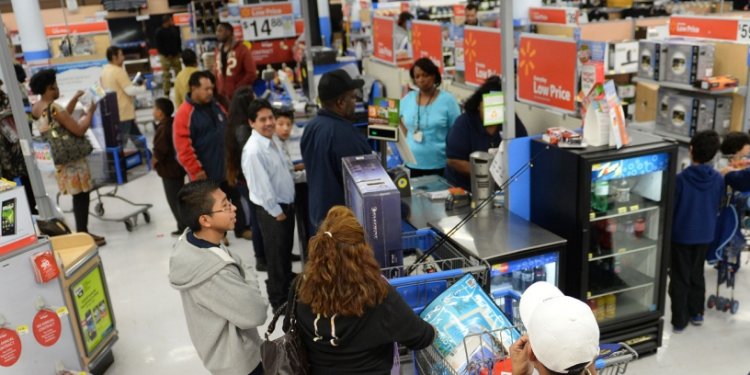
Black Friday sales Reports
Whom won the November 2015 getaway sales battle? Online merchants. Buyers opted to purchase on line without battle the crowds in brick-and-mortar shops.
Brick-and-mortar sales on Thanksgiving Day dropped to $1.8 billion from just over $2 billion in 2014. Black Friday brick-and-mortar sales also dipped slightly. Analytics company RetailNext reported general product sales both for times dropped 1.5 % from last year, maybe because stores began supplying discounts immediately after Halloween, blunting the end result regarding the Thanksgiving Day holiday shopping extravaganza.
Investing in real shops fell 10% from last year on both Thanksgiving Day and Black Friday, relating to retailing research company ShopperTrak. Black Friday product sales in physical stores had been down above $1 billion — dropping from $11.6 billion last year to $10.4 billion.
In contrast, web sales had been up by dual digits for Thanksgiving Day and Black Friday. A contributing factor had been that a lot fewer huge chains were available on Thanksgiving Day. Real shops that shut on Thanksgiving saw robust web product sales. In addition, last year brick-and-mortar merchants discovered that Thanksgiving Day product sales occurred at the expense of those on Black Friday. Shops including Nordstrom, REI, Staples, and GameStop that were closed this Thanksgiving Day all saw an amazing escalation in on the web traffic and product sales.
Thanksgiving Day
Relating to Adobe Digital Index, customers spent $1.73 billion on line on Thanksgiving, 25 % significantly more than last year. The average order value ended up being $162, a nine per cent enhance year-over-year. Discounts averaged 26 per cent.
For the first time, mobile shopping trumped the desktop, attaining a 57 percent share — 43 percent smartphones, 14 percent tablets. Mobile phone taken into account 37 percent of on line income — 22 per cent smart phones, 15 % tablets — and drove a record-breaking $639 million in sales.
Ecommerce analytics supplier Custora reported reduced figures — just a 12.5 % increase in income over 2014, and a 1.5 % upsurge in average purchase worth — but pegged cellular product sales a little greater at 39.3 per cent of all web sales.
Black Friday
Adobe Digital Index calculated that buyers invested $2.74 billion online on Black Friday, a rise of 14.3 % over 2014. There have been $905 million in mobile product sales, representing 33.2 percent of most product sales compared with 27 percent in 2014.
Custora reported internet based income up 16 percent over 2014 Ebony Friday with orders increasing 15.6 % year-over-year. Mobiles sales had been believed at 36 percent of all of the on the web sales. Apple products taken into account 77.6 per cent of all cellular purchases. Email marketing was the primary channel operating on the web sales, accounting for 25 % of deals. Social networking drove a disappointing 1.7 percent of product sales.
Cyber Monday
Adobe reported that $3.07 billion ended up being invested online on Cyber Monday, a 16 % enhance over just last year, with 26 % of product sales — $799 million — from cellular devices.
Based on Custora, Cyber Monday online revenue ended up being up 16.2 percent over 2014, and orders enhanced 14.7 percent. Social media networks drove only 1.5 % of orders, while e-mail marketing accounted for a far more sturdy 22 per cent of requests. The common purchase price was up just 1.3 %. Twenty seven per cent of internet based sales had been added to cellular devices, a growth of 23 per cent over Cyber Monday 2014. Among these, 76 % comes from Apple products.
Online Winners
Amazon’s year-over-year product sales increases were at least 21 % for every of this three days, while Ebay saw just a 7 per cent boost for Thanksgiving Day and Cyber Monday much less than 2 percent on Ebony Friday, in accordance with ChannelAdvisor. Bing Buying also showed healthy increases over just last year, ranging from 18.6 per cent to 40.3 %.
General Trends
People are doing more shopping online and less at brick-and-mortar shops.
The importance of every of these three shopping days is decreasing as merchants offer discounts previously around and continue through December.
A lot more people tend to be shopping via mobile devices. However, while cellular shopping saw powerful development within the vacation with a 34 percent share of internet based product sales, the part of tablets declined. Pills drove 15 percent of internet based sales on Black Friday, a-two per cent decrease from 2014, according to Adobe Digital Index. Smart phones created 22 % of online product sales, 70 % over in 2014.
This season most web merchants supplied free delivery on relatively reasonable order values. Customers expect free shipping on these significant shopping times.
Key Takeaways
- Brick-and-mortar retailers may reconsider starting on Thanksgiving Day because shoppers are only as likely to go shopping online and Thanksgiving Day product sales just cannibalize Ebony Friday sales. There is a social backlash against stores that deny their employees any occasion.
- Smart phones are the mobile phones of choice. Merchants need certainly to enhance web pages when it comes to smaller displays. iPhones will be the preferred shopping product among holiday shoppers.
- E-commerce merchants should have adequate inventory. Adobe Digital Index stated that out-of-stock things struck record levels on Cyber Monday.. Thirteen out of every 100 item views triggered an out-of-stock message — twice the standard price.


















